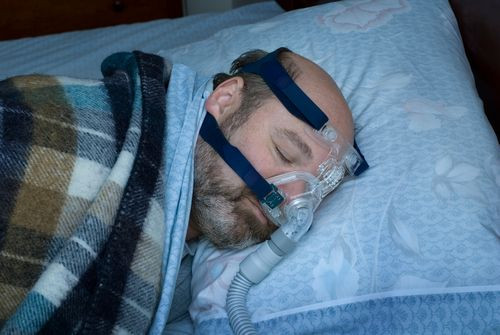Sleep Apnea Doesn’t Raise Cancer Risk Due To Low Oxygen Levels In The Blood

People who suffer from obstructive sleep apnea (OSA) shouldn’t worry about the condition increasing their risks for cancer, according to a new long-term study that took place over the course of nearly two decades.
OSA is a rare sleep disorder that affects roughly five percent of the Canadian population, according to the study authors. In the U.S., where risk factors for OSA including obesity, being male, having diabetes, and suffering from nasal congestion, the risks may be even greater. People with OSA do not take in enough oxygen, which puts them at immediate risk for suffocation, but prior research has also found low oxygen levels in the blood — a condition known as hypoxia — can act as a precursor to many cancers.
The latest study, however, discredits the logical leap one might make from those assumptions. Low oxygen levels don’t, in fact, raise an OSA patient’s risk for cancer. A total of 10,149 subjects composed the study, which spanned from 1994 to 2010. Researchers linked the results of people’s sleep studies with information found in administrative health records, to crosscheck the related cancer rates. While cancer rates rose just over a percentage point, after controlling for risk factors the team found no apparent causal link between OSA and cancer.
"We were not able to confirm previous hypotheses that obstructive sleep apnea is a cause of overall cancer development through intermittent hypoxemia,” the authors wrote.
There may be some limitations to the study. Earlier studies found low oxygen levels did, in fact, predict some cancer risk, the team concedes. However, these studies were not identical to the latest one. First, the studies that found a link included participants who were older, more overweight, and had more severe cases of OSA. While this may seem like a strength on its face, the researchers point out their follow-up time was longer, meaning they were better able to tease out what actually predicted cancer risk.
User error may also have played a role. Many patients with OSA use a device that delivers continuous positive airway pressure, or CPAP, to help control breathing. “Another reason our results may have differed,” the authors noted, “was that adherence to CPAP and other treatments of obstructive sleep apnea were unaccounted for in our study and may have attenuated the effects of obstructive sleep apnea-related predictors.” However, when they controlled for patients who did not use CPAP treatment the results stayed consistent.
Ultimately, OSA patients should take the findings as a hopeful sign their physiological ailment won’t necessarily put them at risk for more serious diseases. However, the usual recommendations still apply. Patients can alleviate their symptoms with regular exercise and eating healthy. Less fat means a lower chance of suffering an obstruction, either from deposits around the throat and neck or a combination mixed with the tongue’s tendency to recede into the person’s airway.
As for future research, the team hopes to further explore the relationship between specific types of cancer and the low oxygen levels OSA produces.
Source: Kendzerska T, Leung R, Hawker G, Tomlinson G, Gershon A. Obstructive sleep apnea and the prevalence and incidence of cancer. Canadian Medical Association Journal. 2014.
Published by Medicaldaily.com



























